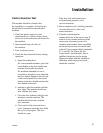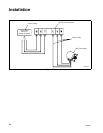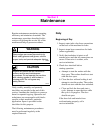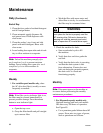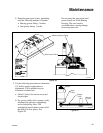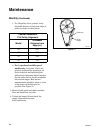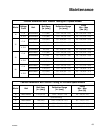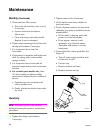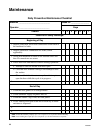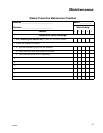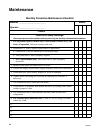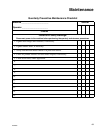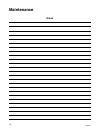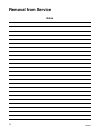
65
Maintenance
F232062
Care Of Stainless Steel
Maintain the natural beauty of stainless steel
and prolong its service life by following
these tips:
•
Ordinary deposits of dirt and grease can be
removed with detergent and water. The
metal should be thoroughly rinsed and
dried after washing. Periodic cleaning will
help to maintain the bright surface
appearance and prevent corrosion.
•
Contact with dissimilar metals should be
avoided whenever possible. This will help
prevent galvanic corrosion when salty or
acidic solutions are present.
•
Salty or acidic solutions should not be
allowed to evaporate and dry on stainless
steel. They may cause corrosion. Ensure
that the stainless steel is wiped clean of
acidic solution residues.
•
Deposits that adhere to the stainless steel
should be removed, especially from
crevices and corners. When using abrasive
cleaners, always rub in the direction of the
polish lines or “grain” of the stainless steel
to avoid scratch marks. Never use ordinary
steel wool or steel brushes on the stainless
steel. Use stainless steel wool or soft non-
metal bristle brushes.
•
If the stainless steel appears to be rusting,
the source of the rust may actually be
an iron or steel part not made of
stainless steel, such as a nail or screw.
One remedy is to paint all carbon steel
parts with a heavy protective coating.
Stainless steel fasteners should be used
whenever possible.
•
Discolorations or heat tint from
overheating may be removed by scouring
with a powder or by employing special
chemical solutions.
•
Sanitizers or sterilizing solutions should
not be left in stainless steel equipment for
prolonged periods of time. They often
contain chlorine, which may cause
corrosion. The stainless steel should be
cleaned and rinsed thoroughly of any
solution containing chlorine.
•
When an external chemical supply system
is used, make certain that no siphoning of
chemicals occurs when the washer-
extractor is not in use. Highly concentrated
chemicals can cause severe damage to
stainless steel and other components
within the machine. Damage of this kind is
not covered by the manufacturer’s
warranty. Locate the pump below the
washer-extractor’s injection point to
prevent siphoning of chemicals into the
machine. See Figure 39 in the Installation
section.



